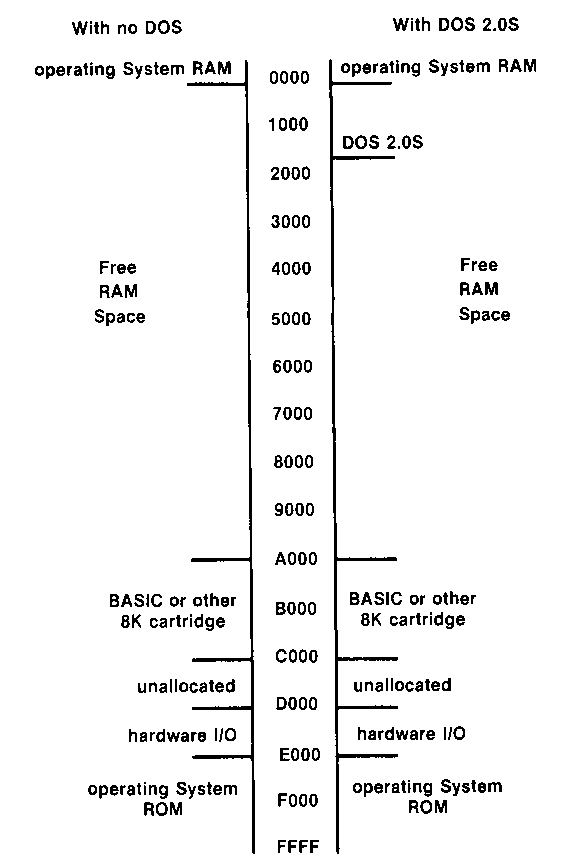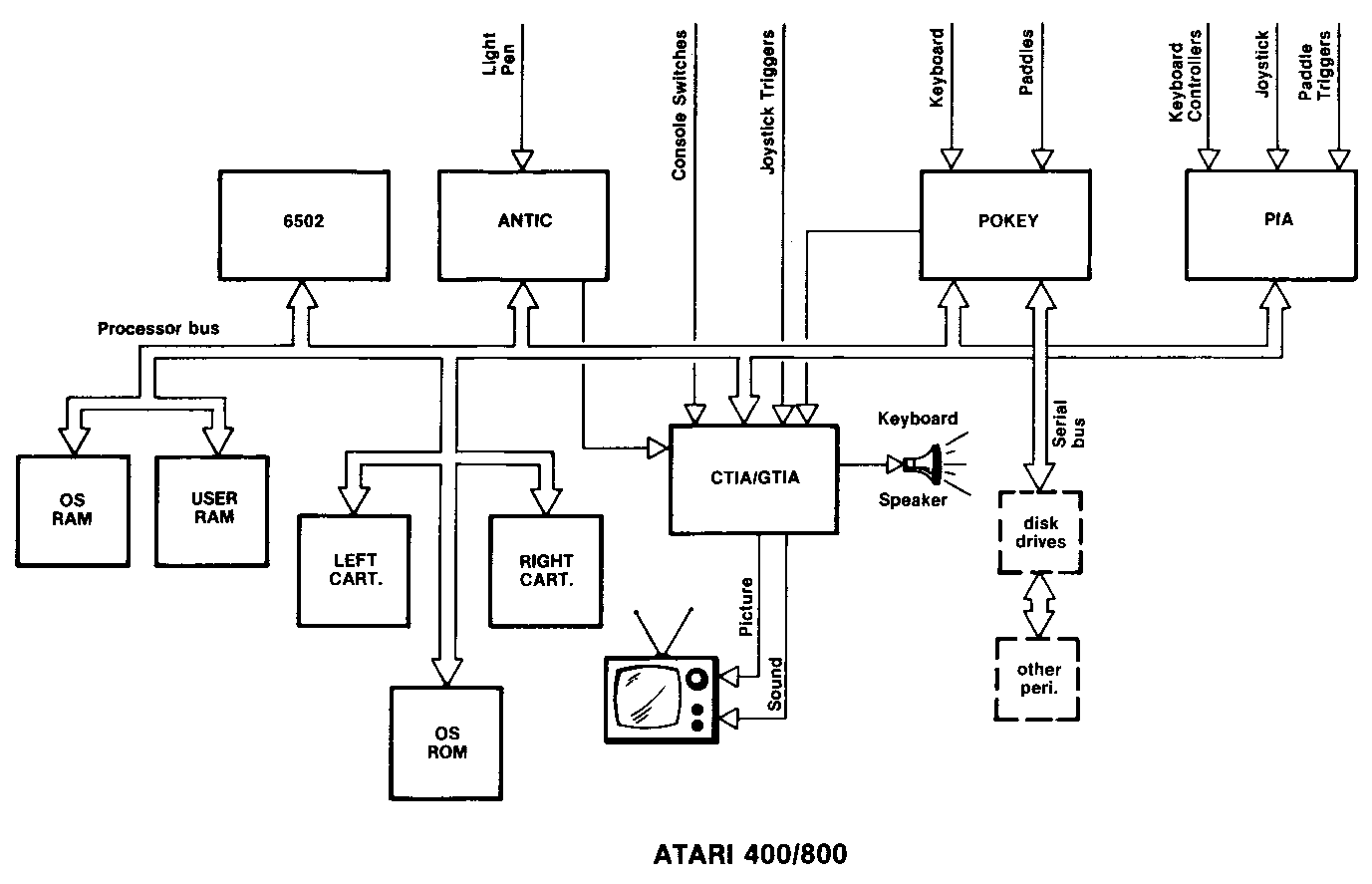
Figure 1-1 Atari Memory Arrangement
The internal layout of the ATARI 400/800Tm Computer is very different from other systems. It of course has a microprocessor (a 6502), RAM, ROM, and a (PIA). However, it also has three special- purpose (LSI) chips known as ANTIC, CTIA, and POKEY. These chips were designed by Atari engineers primarily to take much of the burden of housekeeping off of the 6502, thereby freeing the 6502 to concentrate on computations. While they were at it, they designed a great deal of power into these chips. Each of these chips is almost as big (in terms of silicon area) as a 6502, so the three of them together provide a tremendous amount of power. Mastering the ATARI 400/800 Computers is primarily a matter of mastering these three chips.
ANTIC is a microprocessor dedicated to the television display. It is a true microprocessor; it has an instruction set, a program (called the display list), and data. The display list and the display data are written into RAM by the 6502. ANTIC retrieves this information from RAM using direct memory access (DMA). It processes the higher level instructions in the display list and translates these instructions into a real-time stream of simple instructions to CTIA.
CTIA is a television interface chip. ANTIC directly controls most of CTIA's operations, but the 6502 can be programmed to intercede and control some or all of CTIA's functions. CTIA converts the digital commands from ANTIC (or the 6502) into the signal that goes to the television. CTIA also adds some factors of its own, such as colour values, player-missile graphics, and col- lision detection.
POKEY is a digital input/output (I/O) chip. It handles such disparate tasks as the serial I/O bus, audio generation, keyboard scan, and random number generation. It also digitizes the resistive paddle inputs and controls maskable interrupt (IRQ) requests from peripherals.
All four of these LSI chips function simultaneously. Careful separation of their functions in the design phase has minimized conflicts between the chips. The only hardware level conflict between any two chips in the system occurs when ANTIC needs to use the address and data buses to fetch its display information. To do this, it halts the 6502 and takes control of the buses.
As with all 6502 systems, the I/O is memory-mapped. Figure 1-1 presents the coarse memory map for the computer. Figure 1-2 shows the hardware arrangement.

